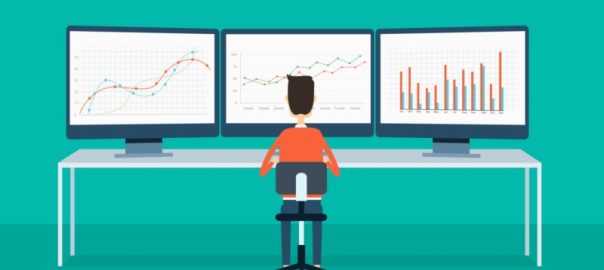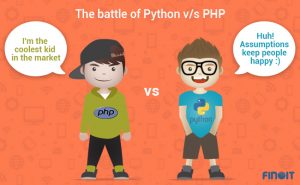In Part 6 of a series, columnist Scott Rayden walks you through the top areas you should focus on in marketing analytics and how to implement them.

No marketing department has an unlimited budget. The money question for us (pun intended) is “How can we best allocate budget to convert and keep the highest-value customers?” Marketing analytics is rapidly evolving to answer the money questions and help marketing leadership make better investments.
Over the last few years, analytics has grown in sophistication in a lot of ways. On the customer side, it’s changing in terms of how much data we can capture on our customers, our ability to connect them across devices and channels and visibility into what drives them through the funnel.
From an internal standpoint, marketing analytics is evolving to require less technical heavy lifting: Where we used to rely on engineering or IT to add tags that could take up to six months, depending on workload, now there are new tools that, once implemented, allow marketing teams to facilitate changes unassisted.
Let’s break down the top areas of focus for analytics. I’m going to walk through what they are, how you can benefit from them and what phase one and two of implementation should look like:
Where should you focus?
Tracking: Like analytics as a whole, tracking has evolved a lot. Ten years ago, marketers primarily focused on tracking page views and time spent on a page. Fast-forward to today, and we are able to develop a more complete picture of who users are, how they get to our site, how they are interacting with us once they get there, and then map that to the funnel as a whole.
1.0: The first level of tracking involves putting basic tags on the site. This is nothing revolutionary, but a lot of companies still haven’t mastered it, which is problematic for two reasons. The first is that a proper tracking foundation is necessary to have sound data to enable sound decisions in the short term.
The second is that data can’t be tracked retroactively. What you want to track a year from now will look different from what you want to track today. You need those tags in place now to be in the best shape to make decisions that will impact the future of your company. This is especially true if your sales are seasonal, and you’ll need several sales cycles to make projections.
2.0: Once you have that foundation, you can move on to more advanced tracking. This involves adding custom data-collection rules and custom events so that you can track every step in the user funnel more explicitly. You need to be thinking about micro-conversions in the user’s journey that ultimately move in the same direction as sales when optimized to do so. With this in place, you’ll be able to make better decisions about how to influence an uptick in sales as a result.
Attribution: This is how we measure, justify and quantify our marketing touch points across the funnel. More often than not, marketers continue to use first- or last-touch attribution, which provides a narrow and biased focus. To graduate past single-touch attribution, an attribution platform is necessary. The value of multitouch attribution really comes from understanding the role that upper-funnel media touch points play in converting users to allocate our spend more effectively.
1.0: The first level in the case of attribution is implementing an attribution solution for your digital campaigns. There is a lot that can go into this, but on a high level, the vendor you choose will be dependent on the type of attribution model you’re looking to establish, the upfront cost, platform flexibility, whether or not you can integrate offline data and so on.
Media bias is important as well; for instance, an attribution solution owned by one of the media channels you are measuring could have inherent bias. Once you have implemented the platform, you should be able to see every digital touch point.
2.0: The next step involves incorporating offline channels to build a complete picture of each step in the journey. As far as attribution solutions go, it’s really about making sure the data is feeding properly for all the channels you are incorporating.
To this end, continued maintenance is an important consideration. As your attribution data matures, you’ll need to keep the data clean and up to date through tagging.
Advanced data application with DMPs: Data Management Platforms, or DMPs, centralize your first-party data collected from online, offline and mobile channels, layer on third-party data and organize it into detailed customer segments. These segments can then be used in a ton of ways, not the least of which is enabling better targeting.
For data-driven marketing teams, DMPs have become a game-changer in the last few years, allowing us to understand prospects and customers in ways that were not previously possible without directly asking users for their data. Implementation of DMPs can be tricky, but the benefits far outweigh the costs.
1.0: The first tier of DMP utilization involves gaining a deeper understanding of customer segments and profiles. This means getting the platform and all pages on the site and tracking conversions. From there, the DMP can be utilized to build and analyze those customer segments. These customer insights will provide a goldmine of knowledge that can be used widely — not only across all marketing initiatives but companywide.
2.0: The next level allows you to use the audiences you’ve created to inform targeting. This step involves adding micro-conversion events and incorporating traffic sources and offline data. With this information, you’re able to look at campaign performance that is specific to the audience targeting and use attribution to understand how placements and bids are performing for various segments, thereby allowing you to put more budget toward the audiences and channels that convert and less on those that don’t.
What’s next?
Marketing analytics will continue to evolve at a record pace, with AI and machine learning taking center stage to drive more of the experiences we feed our customers. Here are the major trends to look out for:
- Automated campaign bidding & targeting: Systems are getting better at determining how much needs to be spent to acquire customers, while accuracy for targeting lookalike audiences continues to increase.
- Personalization: Catering customized experiences to users based on all of the data and attributes we know about them to serve more relevant experiences.
- Dynamic creative: Feeding assets into the system and allowing it to decide what end users should be seeing based on how much exposure they’ve had to the brand, extended across all channels, including paid media channels.
- Customer scoring: Taking a customer’s likelihood to convert and predicted value, letting that determine what types of exposure they should receive and how often.
I hope you’ve gotten some good value out of our CMO audit series. It’s hard to say which subject is most important (or will be for the months and years to come), but it’s safe to say that the success of every initiative will come down, on some level, to data. Nail the analytics, and the path forward will be much clearer.
By the way, you can read the previous articles in this series here:
- Part 1: Customer journey — the greatest strategic need
- Part 2: Untangling the web of mobile technology
- Part 3: Media channels (it’s not what you think)
- Part 4: The convergence of UX and performance marketing
- Part 5: The rise of digital assistants
- Part 6: Analytics
Opinions expressed in this article are those of the guest author and not necessarily Marketing Land. Staff authors are listed here.
Marketing Land – Internet Marketing News, Strategies & Tips
(89)
Report Post






